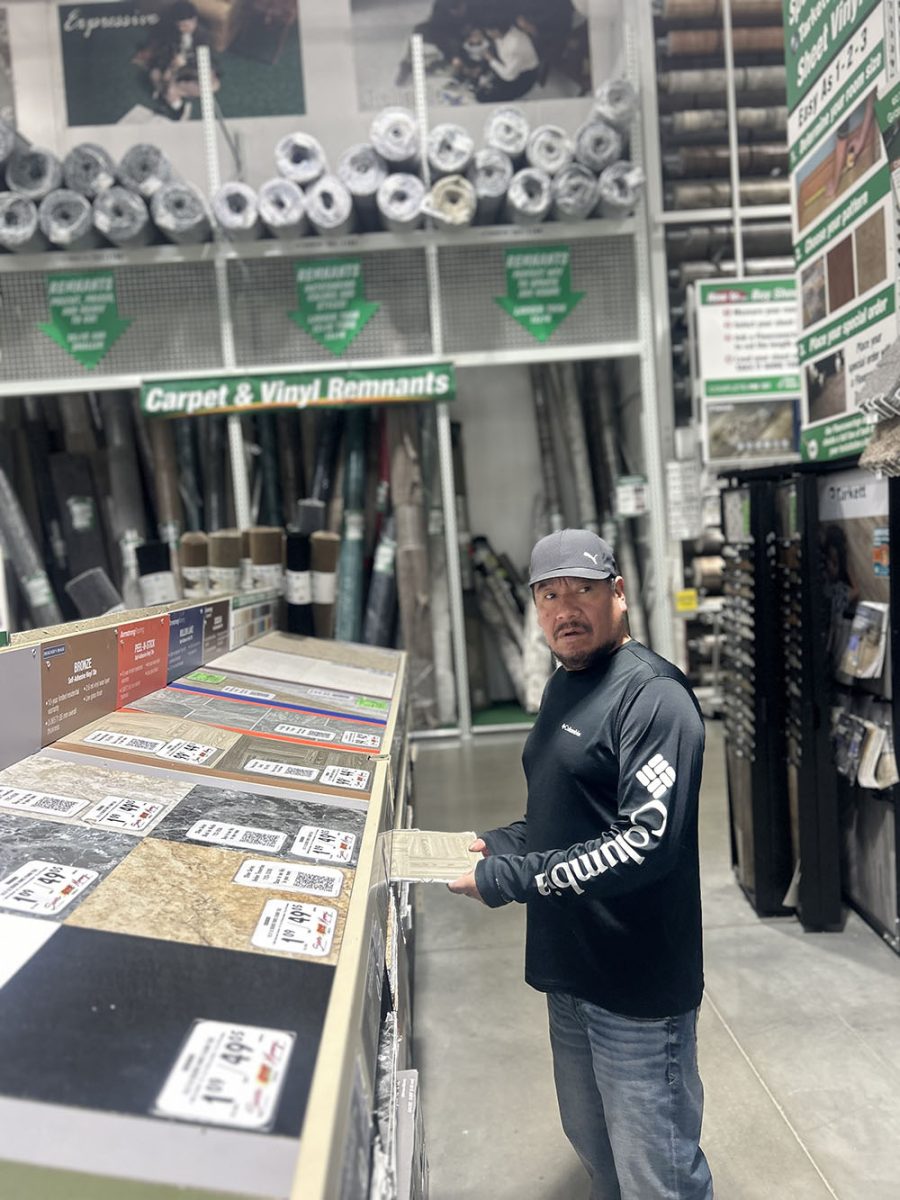The wars on thrifting and fast-fashion didn’t accomplish much
December 4, 2021
One of the most beloved pieces in my wardrobe is a red slip skirt I bought a few years ago on clearance. I wear it at least once a week despite the stigma around outfit-repeating, often feeling that wearing the skirt takes priority over insecurities.
Then people ask where I bought it and my confidence plummets. I feel embarrassed to admit it’s from a fast fashion brand. I don’t want to seem like an awful person, even though I rarely support fast fashion and I know that my purchase hasn’t gone to waste.
I experience similar feelings when I talk about thrifting or shopping second hand. Since I don’t rely financially upon thrift stores to provide my clothing, I am often wary of thrifting frequently because of the arguments about gentrification. As thrifting has become more popular in recent years, an argument has arisen that the financially stable people thrifting just for fun are taking opportunities away from those who rely on the low prices second-hand stores offer. According to these people, there aren’t enough clothes and the prices are rising, making it harder for some people to find affordable clothing.
The fast-fashion controversy is centered around questions of ethics and sustainability. As fast- fashion is so inexpensive for customers, questions about how much people were getting paid (or if they were getting paid at all) arose. The article “The Not-So-Hidden Ethical Cost Of Fast Fashion: Sneaky Sweatshops In Our Own Backyard” by Syama Meagher explains how unlikely it is that everybody involved in the making of fast-fashion is being paid fairly and working in safe conditions.
Unfortunately, sustainable fast-fashion is just as rare as ethical production methods. During the production of clothes, many harmful substances and gases are released. The United Nations Environment Programme (UNEP) claims that the fashion industry contributes to 2-8% of the world’s carbon emissions and that textile dyeing is the second leading cause of water pollution. With fast-fashion, the amount of carbon emissions and textile dyeing is even more significant, as millions of clothes are being produced in a short amount of time.
With all of the problems presented by fast-fashion, buying second hand clothing became the best alternative — until thrifting suddenly became controversial. While the concerns about fast-fashion are supported by clear evidence, the concerns over thrifting are almost entirely irrational. There is minimal evidence to support the claims of gentrification, and an overwhelming amount of statistics support shopping second hand as one of the best alternative fashion sources.
The amount of textile waste, for example, proves that second hand clothes are one of the best options for the environment. The United States Environmental Protection Agency (EPA) states that 11.3 million tons of textiles ended up in landfills in 2018. If these clothes are donated instead of thrown away, however, this number can be decreased. Donations will also increase the amount of clothes in second hand clothing stores, making the arguments about gentrification less credible.
The reality is that neither of these debates accomplished much for improving the fashion industry. While they enlightened people about the problems with fast fashion and how gentrification affects people, there hasn’t actually been much change to the way people approach readily-available fashion. Fast fashion brands have done little to improve their sustainability, and debates about thrifting continue.
Of course, we have all made decisions about where to get our clothes that aren’t completely ethical or environmentally-conscious. It’s ridiculously time-consuming to be constantly environmentally-conscious and ethical. While the person spending $1,000 on a SHEIN haul definitely deserves to be called out, the person with one shirt from Forever 21 does not.
These criticisms and complaints are inherently misogynistic, since fashion has always been something heavily associated with female-presenting or female-identifying people. Misogyny is an ingrained belief in society of a disdain for women. When women are being criticized no matter where they buy their clothes, that suggests that there is no fault with women, but with society — and that problem is misogyny.
As many fast fashion brands cater to teenage girls, it is often these young women being demonized for buying from fast-fashion stores. As a teenage girl myself, it is more than likely that the insecurity I feel in admitting to buying my favorite skirt from a fast fashion brand is a product of misogyny.
Thrifting is affected in a similar way. The practice was popularized by young female influencers like Emma Chamberlain and Bestdressed, which means that a similar demographic continues thrifting today and that this demographic constitutes the majority of the people facing the arguments about how they’re gentrifying second hand shopping.
It is also frequently young women that are reselling thrifted clothes on apps like Depop or Poshmark. These sellers are criticized for their actions to the point that some of them quit their businesses — making them effective examples of society’s misogynistic beliefs.
Of course, shopping for clothes is not something only teenage girls do — hopefully, fashion will eventually become something that no one gender is associated with. As of today, however, fashion is something heavily associated with those who are feminine-presenting or female-identifying.
As buying fast fashion and thrifting are still popular practices, it is important to have these conversations about the problems with readily-available fashion. Not everyone can afford to buy truly sustainable clothes, so the judgement around readily-available fashion options needs to end.
Remember that not everyone is perfect. Don’t be afraid to speak your mind about the problems with readily-available fashion, but also be prepared to consider the reasons someone may have been making a choice that wasn’t completely ethical or sustainable. Know that it is likely you have made some of these mistakes yourself.













flora harper • Dec 14, 2021 at 12:30 pm
Nice job!